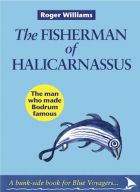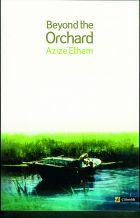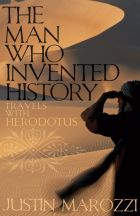Buy or gift a stand-alone digital subscription and get unlimited access to dozens of back issues for just £18.99 / $18.99 a year.
Please register at www.exacteditions.com/digital/cornucopia with your subscriber account number or contact subscriptions@cornucopia.net
Buy a digital subscription Go to the Digital EditionWhen Azize Ethem revisits the small village near Bodrum where she and Selim, her late husband, made their first home in Turkey, the memories flood back – not least the bizarre behaviour of tourists, newly arrived on the Aegean and causing consternation amongst her neighbours
Last year, in mid-July, slap bang in the middle of a fierce and protracted heatwave, my friend Noel arrived from New Zealand. When I’d first gone to New Zealand at the age of six, I’d immediately been labelled at school as “a very odd child”. That first day, in music class, I was asked to sing my favourite song. Choosing the Royal Engineers’ unofficial anthem rather than a nursery rhyme was probably not a good idea, but Noel thought it was great and we’ve been friends ever since.
On this visit we headed down south to the Muğla area, where my late husband, Selim, and I lived for 15 years. The trip brought back a flood of memories.
In 1990 an English travel company started to bring tourists to our village, Akyaka. Half a dozen houses had been rented, cleaners recruited and a young English rep installed. Within days of the first arrivals we had villagers coming to us to report puzzling problems. Well, they weren’t problems as far as we locals were concerned, but even though the brochure said “rustic” the visitors expected a constant supply of electricity and water. It wasn’t long before the tourists found their way to our door, counting on us to sort things out.
They certainly didn’t like the dried cowpats burning in the garden of the outdoor restaurant, and still objected when it was explained that the smoke kept the mosquitoes at bay. They could buy gin but not tonic. They really got uptight over the fact that the butcher’s shop often had tomorrow’s meat tied, very much alive, outside the door. The local buses didn’t run on time, and sometimes just didn’t run at all. Milk was procured by taking a jug to the home of Ayşe, the cowherd. There were numerous cases of “food poisoning”, which turned out to be caused by sitting in the sun all day drinking copious quantities of alcohol. One elderly woman was inconsolably distraught because there was no Catholic church. In tears, she told us she had never, ever missed Sunday mass.
Just occasionally there were people who found it all a wonderful adventure, entering into the whole experience of visiting our bucolic haven.
On the other side of the fence were the hospitable locals who were totally bemused, and sometimes distressed, by the guests. Early one morning we were woken by a bevy of villagers, worried about a man seen running away from the village in his underwear. It took Selim half an hour to explain the strange activity known as jogging. These burly fishermen and farmers could not begin to fathom why anyone would run to keep fit.
My husband was witness to the mass reaction of the villagers the morning a woman walked into the grocery shop wearing nothing but a bikini. All the men in the tea house stood up to get a better view, while Hüseyin the grocer fled. The muhtar and imam spent most of the rest of the day in our garden with Selim, discussing the strange ways of the English. The nice little rep took to locking herself in her room for days at a time.
The owner of the fish restaurant, constantly being asked for bottled water, bought bottles and a gadget for putting silver tops on them. We never felt it necessary to tell the tourists it was local spring water. Captain Mehmet, the fisherman-cum-cigarette smuggler, hosed down his boat and started tours to Cleopatra Island. The haberdashery shop invested in Turkish souvenirs made in China and turned the vacant roof space into a restaurant selling “Lam und Cow Flesh”.
When the on-site representative packed her bags and escaped, the tour company owner flew out from England and asked us if we would take on the job. Selim told her that, as we were doing it already, we might as well make it official. Within days I was standing at the airport in a rather stylish uniform, holding a clipboard and feeling terribly important. That was the beginning of a decade of being paid to welcome people to the village. While Selim kept all calm on the home front, I embarked on a career as a guide. At first, having read the relevant George Bean chapter in bed, I would next morning pretend it was all old hat to me.
It took years to instil punctuality into Osman and his brothers. They found the idea that buses should be on time ridiculous, and my not permitting them to take a detour of four or five kilometres to deliver crates of vegetables showed my mean-spirited nature.
At Ephesus I mislaid my first-aid kit and an hour later backtracked to find the bomb squad placing shields around it. And on one tour down the bay Captain Mehmet’s boat began to sink.
But over the years we learned to cope with every challenge and how to smile through thick and thin.
After visiting Ephesus and Dalyan, Noel and I made our way to Muğla, where we boarded a dolmuş to Akyaka, that village where Selim and I had made our first home in Turkey. Until the 1970s it had been an outpost of the village of Gökova, three kilometres inland. With the draining of the swamp and eradication of the Anopheles mosquito, it had grown into a village in its own right. What is now a bustling town and tourist destination was, in antiquity, on the outskirts of the city of Idyma. This ruined Carian city has not yet been the focus of serious excavations, but temple tombs can be seen in the hills, with fragments of mosaic floors, columns and carved inscriptions strewn over the forest floor. Historically, Idyma was the port of the city of Muğla. From here ships sailed to Egypt carrying the resin of Liquidambar orientalis – the indigenous liquidambar tree – used in the embalming process. These trees can still be seen growing beside the road to Marmaris.
When Selim and I left Akyaka in 1999, there was one hotel and several B&Bs. Now hotel beds alone top 2,200. Restaurants and shops catering to tourists abound, as well as three supermarkets selling meat in little plastic trays and milk in bottles. Bikinis in the village square no longer raise an eyebrow. Six kite-surfing businesses compete on the shore, with all manner of other activities on offer to visitors.
The reception I received was heartwarming, with Osman stopping his bus in the middle of the road and hugging me until I thought my ribs would crack. I got lost trying to find our old house and was bewildered by the international feel of the place. Prompted by tourism, villages have often expanded in a less than aesthetic way. The saving grace for this resort is the strict building code enforced in 1988, when the region was the first in Turkey to be declared a Special Protected Area, with all buildings adhering to the local Ottoman Ula-Muğla style of architecture. Akyaka is no longer the village I used to write of in my diary as Dereköy. But, contrary to my expectations, it is still beautiful.
Beyond the Orchard, by Azize Ethem (Çitlembik), is available from cornucopia.net, price £9.99
With its healing brine baths and golden beaches, its wealth and variety of architecture, and its layers-deep history, this resort offers something for everyone – from hedonist to hypochondriac
Yevpatoria in Crimea was the home the young Anna Akhmatova, an icon of Russian literature, who fell foul of Stalin
Like many writers, Chekhov made his way to Crimea to nurse his TB in a milder climate. His two houses, now museums, became magnets for artists. One he left to his sister, the other to his wife.
Philip Mansel on the future Edward VII’s Ottoman expedition
By any standard, Hüsamettin Koçan’s mountain-top Baksı Museum, in the northeastern Anatolian village where he was born, deserves a place among the world’s top ten remote museums.
This silver goblet was one of more than 600 medieval treasures from Central Asia crowding Bonhams’ elegant rooms in Edinburgh for six days in January.
Mulberries come in an array of hues: black, white, pink, purple; some enticingly sweet, others astringent and healing. As Berrin Torolsan can testify, having grown up with them in her Istanbul garden, all are adored – by man, mallard and pine marten alike. Here she traces the history of this lucious fruit
Thomas Whittemore, the American scholar and philanthropist, was instrumental in restoring the Byzantine treasures of Ayasofya. Robert S Nelson delves into his enigmatic life
The V&A’s Tim Stanley eyes up the Louvre’s astonishing new Islamic offering
From the towers of Tatary to the tombs of Scythian kings, from clifftop citadels to an underground castle, from Balaklava to the beaches of the Tsarist Riviera, Crimea is a land to fall in love with, waiting to be enjoyed, not destroyed
As the Sadberk Hanım Museum celebrates the art of embroidery, Min Hogg marvels at the motifs of palaces, fruit and flowers, sea and cityscape, wrought stitch by stitch, to adorn every Ottoman home
Aard Streefland tells the story of the Dutch orientalist Marius Bauer (1867–1932)
The Crimean khans founded their capital in the fertile foothills of the Crimean Mountains in the 15th century. This was the nucleaus of the land known as Cim Tartary. The garden palace of Bahçesaray is a glorious reminder of the khans’ 350-year reign
Dramatic and picturesque, Crimea’s southern coast became a resort for doomed royalty and a refuge for ailing literati
Two ports – Sevastopol and Yevpatoria – rule Crimea’s flat west coast. One was built for war, the other for recreation. Both played a part in the Crimean War
Geonese merchants, a millionaire painter and a symbolist poet brought fortune and fame to the eastern stretches of Crimea’s south coast and its fertile hinterland
Balaklava, Sevastopol, Inkerman, the Valley of Death – in Britain, where the savage toll was so acutely felt, these names still have the power to arouse pride and fury. Algernon Percy travelled to Crimea to visit the evocative battlefields
From the Danube to the Caucasus, conflict raged. The Ottomans were fighting for their territories and their lives, but the full story of their courage is only now being told, says the military historian Mesut Uyar
The war of 1853–56 was a calamitous clash of imperial ambitions. Turkey sustained heavy losses, but without them she might have ceased to exist. David Barchard puts the conflict in context




Cornucopia works in partnership with the digital publishing platform Exact Editions to offer individual and institutional subscribers unlimited access to a searchable archive of fascinating back issues and every newly published issue. The digital edition of Cornucopia is available cross-platform on web, iOS and Android and offers a comprehensive search function, allowing the title’s cultural content to be delved into at the touch of a button.
Digital Subscription: £18.99 / $18.99 (1 year)
Subscribe now